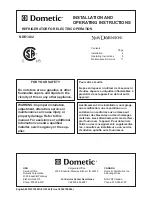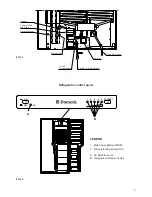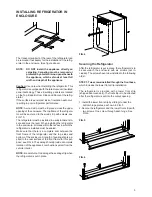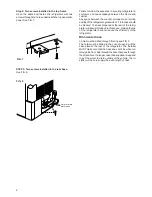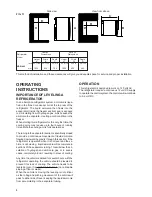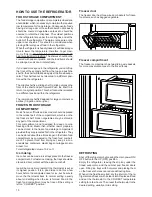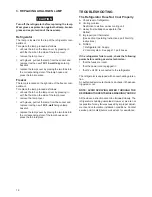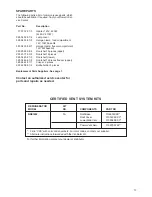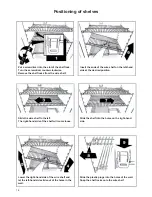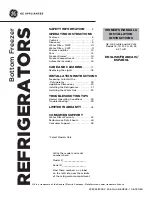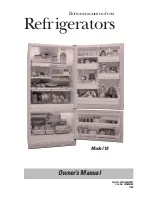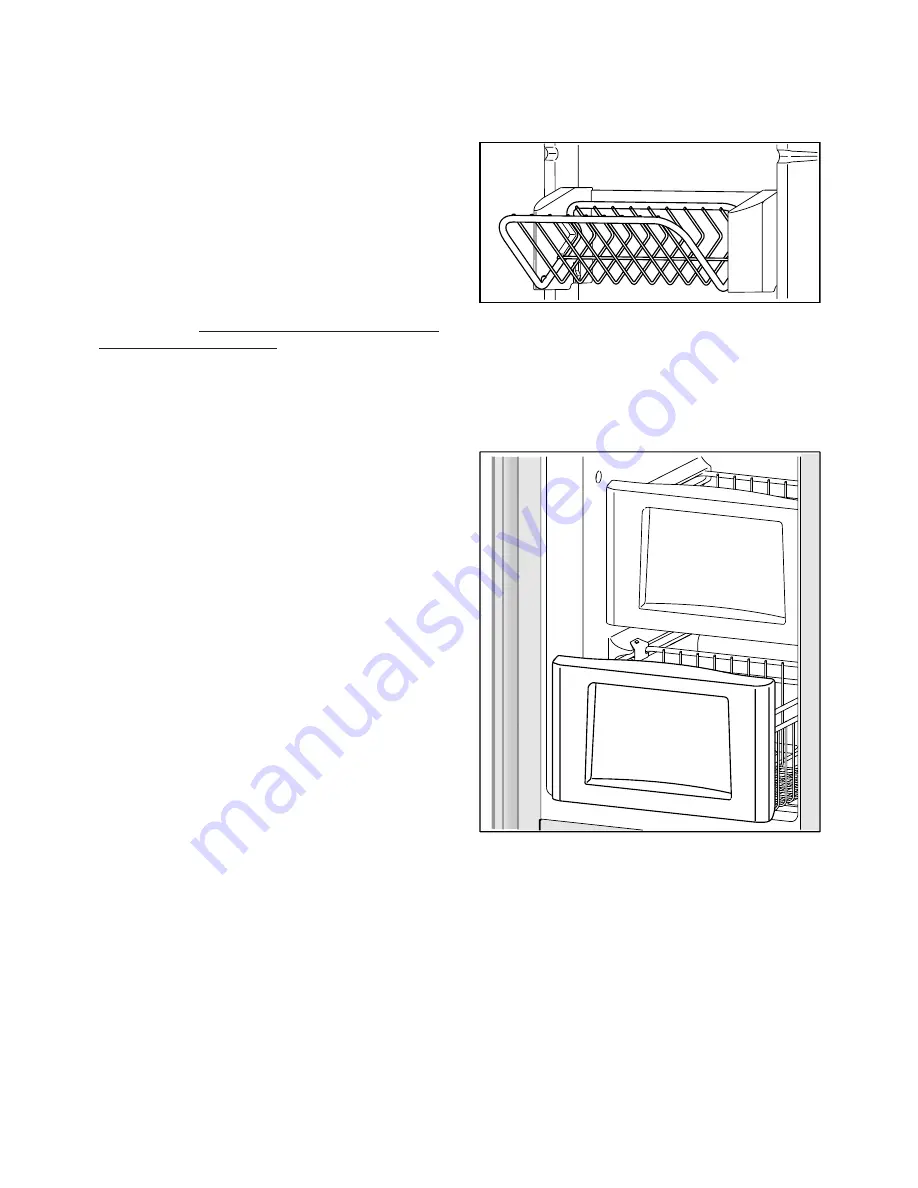
10
HOW TO USE THE REFRIGERATOR
FOOD STORAGE COMPARTMENT
The food storage compartment is completely closed and
unventilated, which is necessary to maintain the required
low temperature for food storage. Consequently, foods
having a strong odor or those that absorb odors easily
should be covered. Vegetables, salads etc. should be
covered to retain their crispness. The coldest positions
in the refrigerator are under the cooling fins and at the
bottom of the refrigerator. The warmer areas are on the
upper door shelves. This should be considered when
placing different types of food in the refrigerator.
When the refrigerator is heavily loaded, it will take a longer
time to lower the temperature; therefore, to get maxi-
mum efficiency the refrigerator and food items should
be precooled prior to loading. The shelves should not be
covered with paper or plastic, and the food items should
be arranged so air can circulate freely.
If you need more space in the refrigerator you can lift up
the front of the second shelf from the top and push the
shelf in, the shelf will fall down against the finned evapo-
rator. This shelf cannot be relocated to a different posi-
tion within the refrigerator.
The middle shelf is a sliding shelf, to slide out grasp the
front of the shelf and pull forward. Push the shelf in to
return to original position. This shelf cannot be relocated
to a different position within the refrigerator.
The lower door shelf is designed for large containers or
bottles (1/2-gallon milk or juice).
FROZEN FOOD STORAGE
COMPARTMENT
Quick frozen soft fruits and ice cream should be placed
in the coldest part of the compartment, which is on the
top freezer shelf. Frozen vegetables, may be stored in
any part of the compartment.
This compartment is not designed for deep or quick-
freezing of food. Meat or fish, whether raw or prepared,
can be stored in the frozen food storage compartment
provided they are precooled first in the refrigerator. They
can be stored about three times longer in the frozen food
compartment as compared to the fresh food compart-
ment. To prevent food from drying out, keep it in cov-
ered dishes, containers, plastic bags or wrapped in alu-
minum foil.
Total Refrigerated Volume 13.2 cu.ft.
Ice making
Ice cubes can be made in ice trays placed in the freezer
compartment. For faster ice making, the trays should be
placed in direct contact with the aluminum shelf.
Ice will be made more rapidly if the thermostat is set at
its highest position. It is a good idea to do this a few
hours before the anticipated need for ice, but be sure to
move the thermostat back to normal setting, usually
about mid setting when the ice is formed. Food in the
fresh food compartment may be frozen if the setting is
left on “COLDEST” position.
Freezer door
The freezer door has three wire door baskets for frozen
food items, such as bagged vegetable.
Freezer compartment
The freezer compartment has two sliding wire baskets
for more convenient access to the frozen foods.
DEFROSTING
Shut off the refrigerator by pressing the main power ON/
OFF button to the UP (OFF) position.
Empty the refrigerator, leaving the drip tray under the
finned evaporator, and the cabinet and freezer doors
open. Filling ice trays with hot water and placing them
on the freezer shelves can reduce defrosting time.
When all the frost has melted, dry the interior of the re-
frigerator and freezer with a clean cloth. Replace all food
and set the thermostat to the COLDEST temperature
setting for a few hours. Then reset the thermostat to the
desired setting, usually at mid setting.

